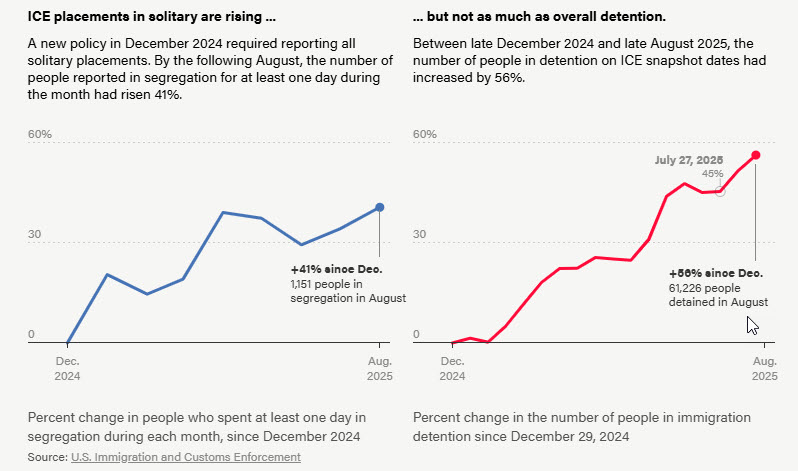Immigration and Custom Enforcement (ICE) data shows officials are sending more people to solitary confinement as the administration locks up more people en masse in immigration detention, according to recent reporting by The Marshall Project and Univision Noticias available here. This has been raising alarms about the mental health consequences for thousands of detainees.
According to data analysis from The Marshall Project and Univision, from December 2024 to the end of August, the number of people who spent at least a day in solitary confinement increased by 41%. Solitary confinement in ICE detention peaked in August 2025 with over 1,100 placements in segregation that month. The data shows the number of people ICE is holding in solitary is not growing as fast as the overall ICE detention population. The use of segregation had increased under the Biden administration too.

The uptick in the use of segregation is concerning, according to psychologists, because more people are exposed to its harms. “Solitary confinement is perhaps the most punitive practice that exists in carceral settings, and it’s being used in immigration detention in very similar ways,” said Caitlin Patler, a professor of public policy at the University of California, Berkeley who has studied ICE’s use of isolation. “Now you’re getting more and more people who we would not have previously seen detained, [who are] experiencing these conditions. It’s a traumatic experience for anyone.” Psychologists say any time in isolation can be damaging, especially for immigrants who have experienced trauma.
Moreover, the increased use of segregation in ICE detention is happening at the same time that oversight of conditions inside ICE detention facilities has decreased, according to The Marshall Project and Univision. They point to budget cuts to the Office of Immigration Detention Ombudsman, as well as the Department of Homeland Security’s Office of Civil Rights and Civil Liberties, and attempts by the department to restrict visits by members of Congress.